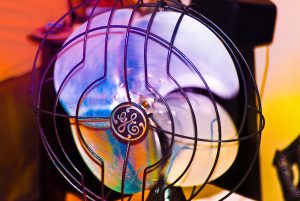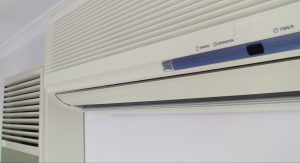| Average Australian home | Up to $1300 a year / 12.3kWh a day / 3 ton C02 per year* |
|---|---|
| Smart renter | Up to $600 a year / 6kWh a day / 1.4 ton C02 per year* |
| Very smart renter | Up to $200 a year / 2kWh a day / 0.5 ton C02 per year* |
*A price and energy range has been given here because how much you pay will depend on the type of heating and cooling you use and where you live in Australia.
A smart renter doesn’t think in terms of heating or cooling but rather about thermal comfort, this is, staying comfortable throughout different seasons and temperature extremes. As long as your rental has a reasonable level of thermal performance for your area, there’s plenty you can do to drastically lower your heating and cooling bills without sacrificing comfort.
First step: Acclimatise to the seasons
What causes a dislike of intense cold or heat is not necessarily the cold or heat itself, but our inability to adapt. We have come to enjoy all types of seasons and weather the more we have acclimatised to them instead of living in a 20 degree bubble all year round.
Winter for us means longer sleeping hours, rejuvenation, walks on crisp, clear days and hearty food. Summer means long days to enjoy more daylight, swimming to cool off, working in the cool of the morning, lots of home grown produce and warm showers cooked by the sun.
Now once you’ve got the right mind set, here’s some practical ways to acclimatise:
- Dress for the seasons
In Germany, people say there’s no such thing as bad weather, only bad clothing. While we are sure that most of you have the right idea, we do see the occasional person in Melbourne wearing a full suit on a hot summer’s day or open shoes on a very cold winter’s morning. We never saw people doing this in Germany whilst living there.
- Insulate your body, then your home
In winter, wearing a set of thermals underneath your normal clothes almost doubles the insulating effect of your clothes, yet they are invisible to everyone else and not noticeable to you. We find colder weather indoors and outdoors much more comfortable using this strategy.
- Use a blanket on the couch
Many activities generate some body heat (even typing), meaning that we don’t need a 20 degree indoor temperature to be comfortable. Aside from sleeping though, lying on the couch is an activity where the body is at its most inactive, meaning that it’s easy to feel cold.
Instead of throwing on the heater, try throwing on a blanket as it has been shown to lift your comfort level by 5 degrees Celsius (so 15 degrees on the couch with a blanket is like 20 degrees without).
“crochet blanket love” by Tania & Artur is licensed under CC BY-NC-ND 2.0
- Use the right bed linen for the right season
Polyester or cotton works best for the warmer months while flannel is much better for the colder months. You only need to change which type you use twice a year as both are ok in autumn and spring.
In the winter months, add an extra thick doona and you shouldn’t need to heat at night save for an electric blanket to pre-warm the bed if it gets cold enough.
- Make use of windows, curtains and blinds
Simple, use windows to let in warmer or cooler air if desired depending on the season and shut them up when you want to insulate your interior against heat or cold. If you are lucky enough to have curtains and exterior blinds, do the same to let in light and sun or block them out when desired.
Interior blinds are not as effective as curtains but they are still better than nothing. And if this sounds trivial, remember that it can take an air conditioner an hour to remove the heat that has been carelessly allowed to enter the home through unshaded windows.
- Adjust your routine to the weather
Besides olive oil, pasta and flamenco, one of Southern Europe’s greatest legacies is the siesta. The idea is simple; make your routine work with the weather, especially hot weather. This means that if you have a physically strenuous task in summer, do it in the cool of the morning, evening or postpone it to a cooler day.
The same with cooking; try to eat lighter foods in summer and even better, enjoy some outdoor cooking instead of dumping heat in the kitchen that will take the air conditioner half an hour to remove.
- Allow time to adjust
It takes 2-3 weeks for our bodies to acclimatise to warmer and cooler weather so don’t despair if you feel a little uncomfortable at the beginning of a new season.
The person who just switches on the heater and cooler pays the penalty of greater discomfort in non-climate controlled situations (like the outdoors, train stations, etc.). Make a little effort to acclimatise and you’ll enjoy greater thermal comfort in all conditions.
Second step: Use personalised heating and cooling if need be

“GE Fan (14 of 19)” by Josh Self is licensed under CC BY-NC-SA 2.0
We can easily maintain thermal comfort in an indoor temperature range of 15-25 degrees Celsius using the above tips. We can further increase this range by using some low power, low cost technology.
Thanks to our electric blanket, we just need to pre-warm our bed for 15 minutes on a really cold night to get a comfy night’s sleep negating the need to use the heater overnight (15Wh/Under $0.01 vs 9000Wh/$2.16).
Heated slippers mean that we have more days where we work from home without the heater on (70Wh/$0.02 vs 10000Wh/$2.40 per day) and in the summer, our fan allows us to stay comfortable up to 30 degrees inside (30Wh/$0.01 vs 1000Wh/$0.24 per hour).
So now, our comfortable indoor temperature range is 14-30 degrees during our waking hours (and any overnight temperature that we experience in Melbourne) so on average, we only need space heating and cooling for a few hours, 1-2 days a week in summer and winter.
Third step: Smart space heating and cooling

For the days when your interior temperature drops or climbs outside of your comfort zone, space heating or cooling may be necessary. Here’s some tips to make the most of it:
- By acclimatising to different seasons, you should be more comfortable in a greater temperature range so set your heating and cooling accordingly. We only need to heat to 16 degrees or cool to 25 degrees to get comfortable again.
- There’s no point in heating or cooling a whole house just to keep your stuff at a certain temperature. Close off areas that don’t need heating or cooling. We use our split system to heat and cool the living area and kitchen only.
- Occupants of a house can share a heated and cooled space together to make your energy go further. This was the norm until recently and lounge rooms are big enough to accommodate several people even if they are doing individual activities.
- Close exterior doors and windows unless you’re using an evaporative cooler.
- Acclimatising to the seasons should give you a better awareness of weather changes meaning that you can anticipate a sunny morning after a frosty night or sense a cool change after a hot day which enables you to switch off heating or cooling when it’s not needed.
Using the above tips should easily get your heating and cooling energy use below a quarter of what the average Australian needs regardless of what heating and cooling system you have and you should find your general thermal comfort to be better in all seasons.
Read The Renewable heater you never knew you had to get a grip on what are the best space heating and cooling options for renters to look out for.
